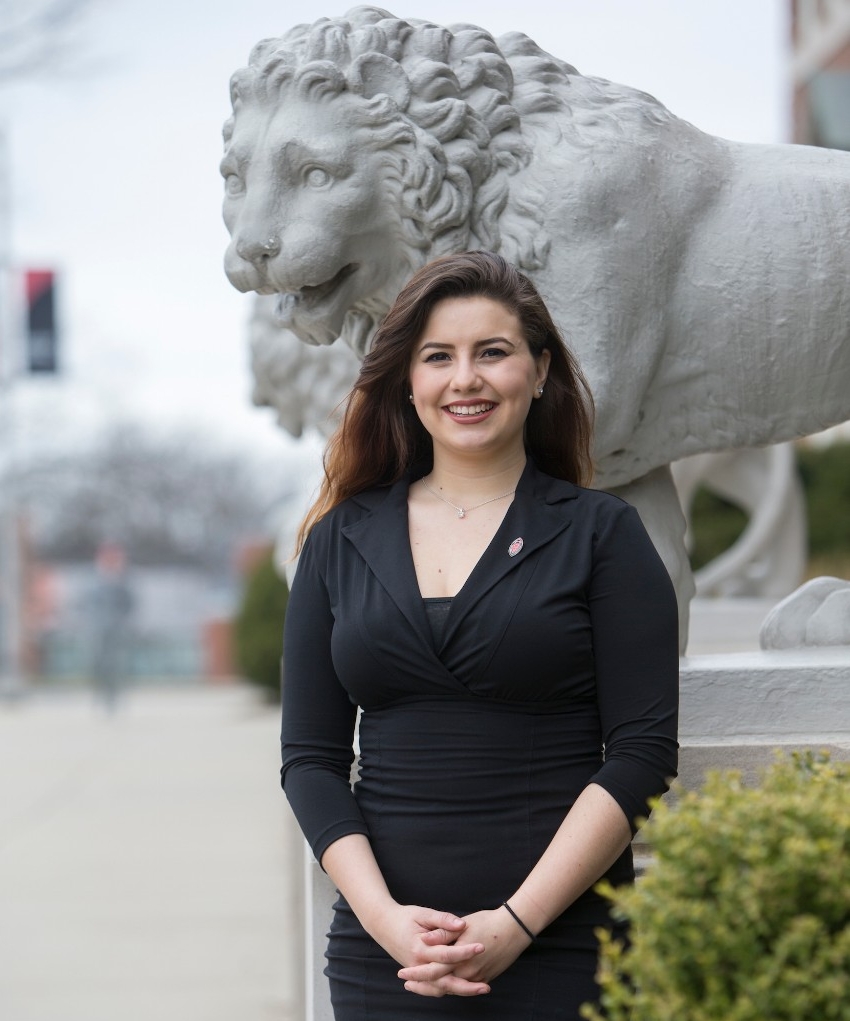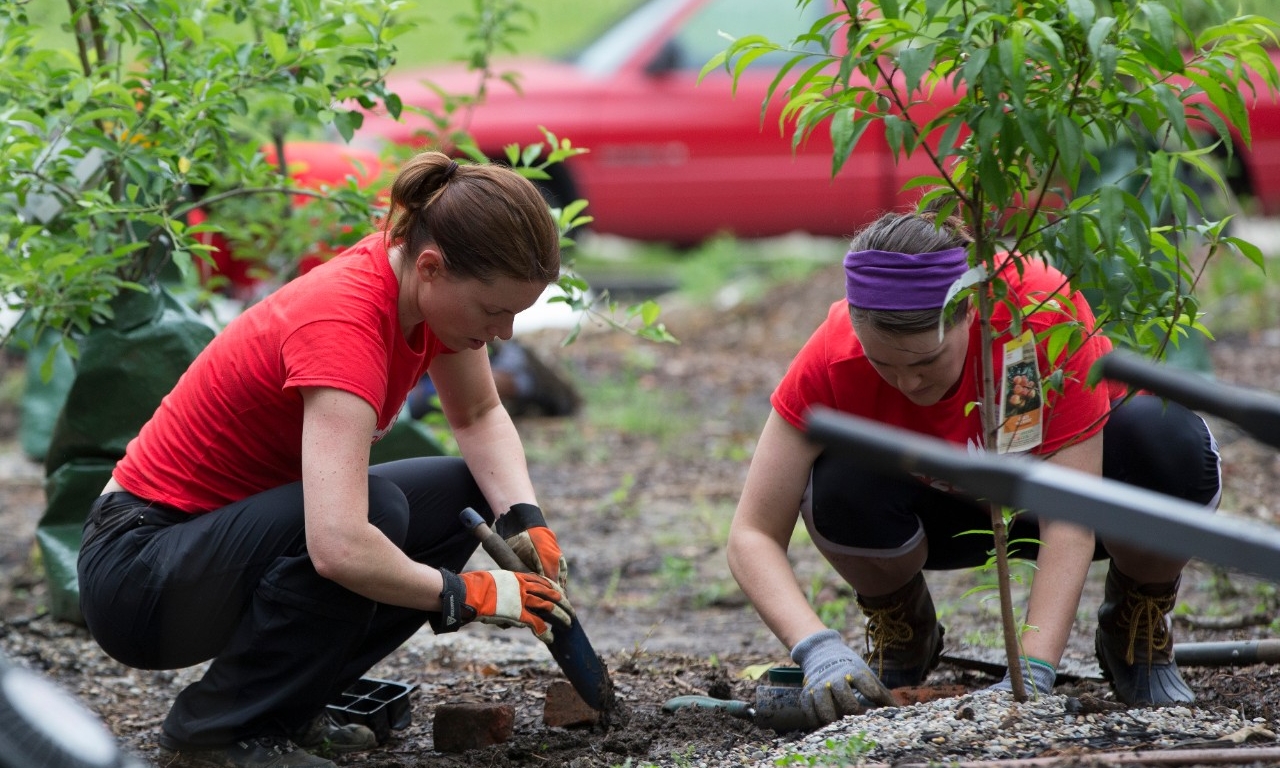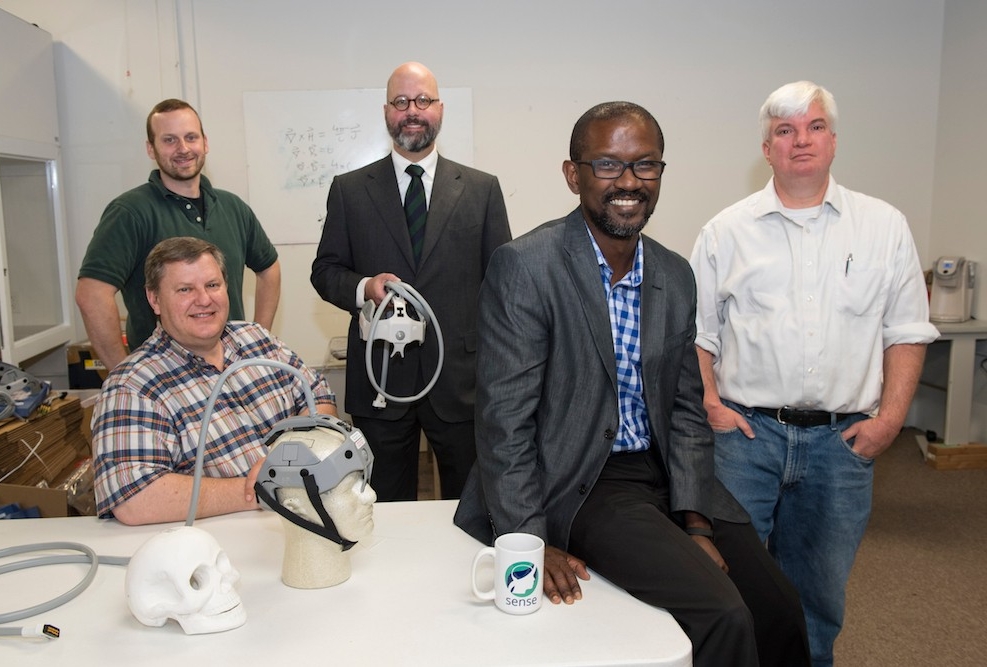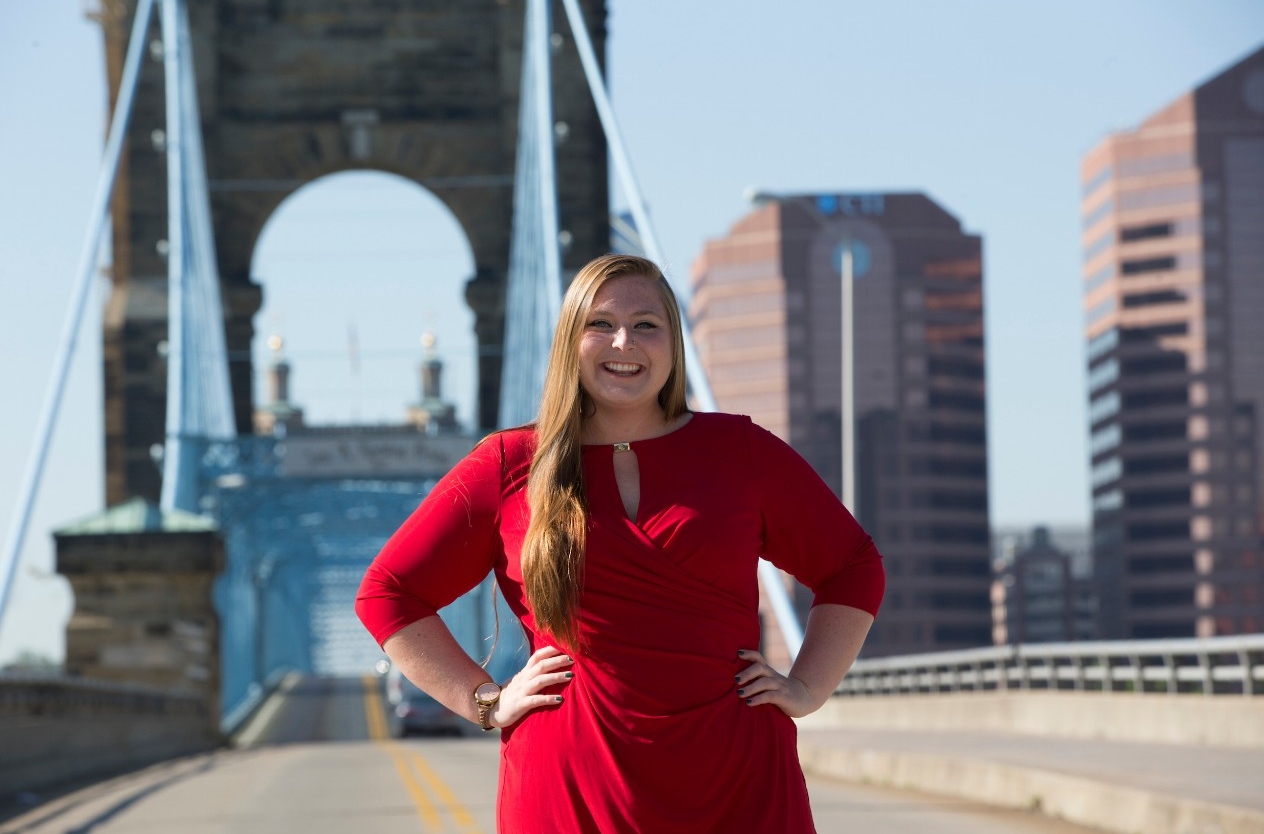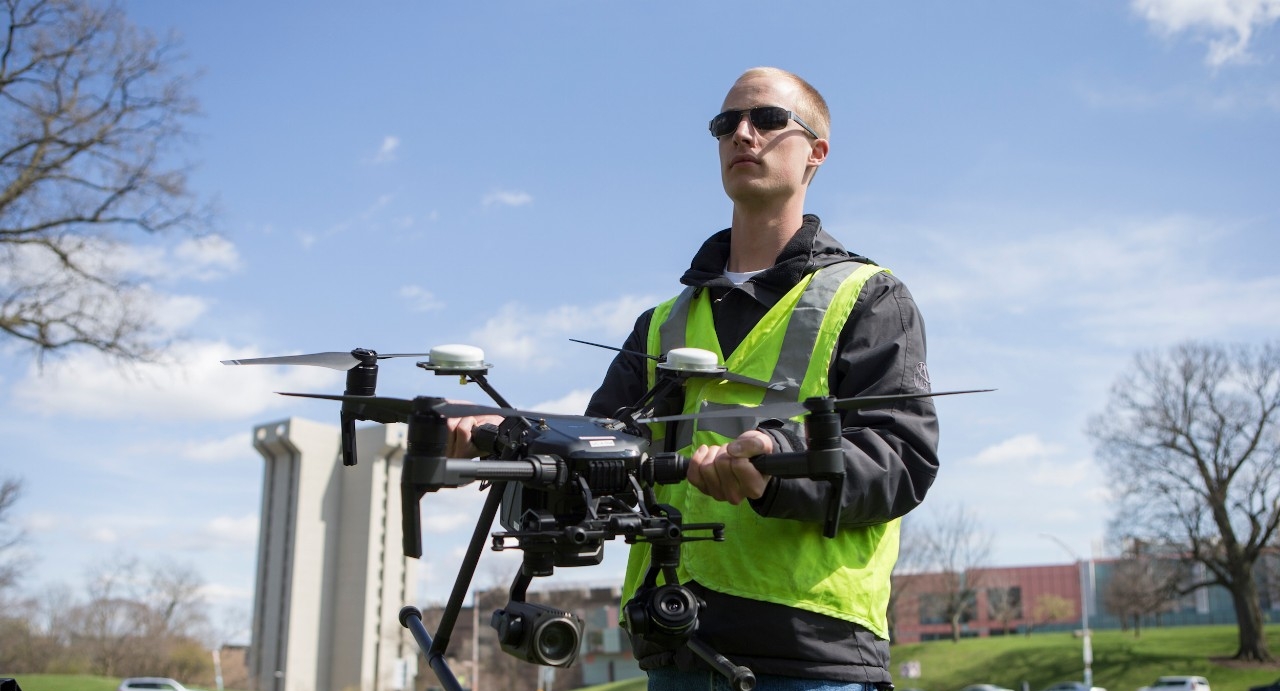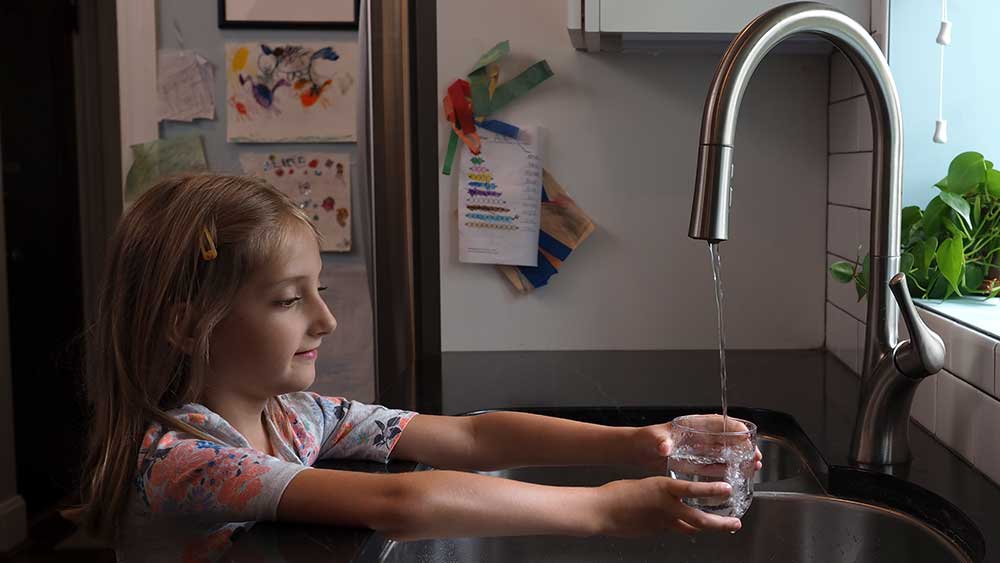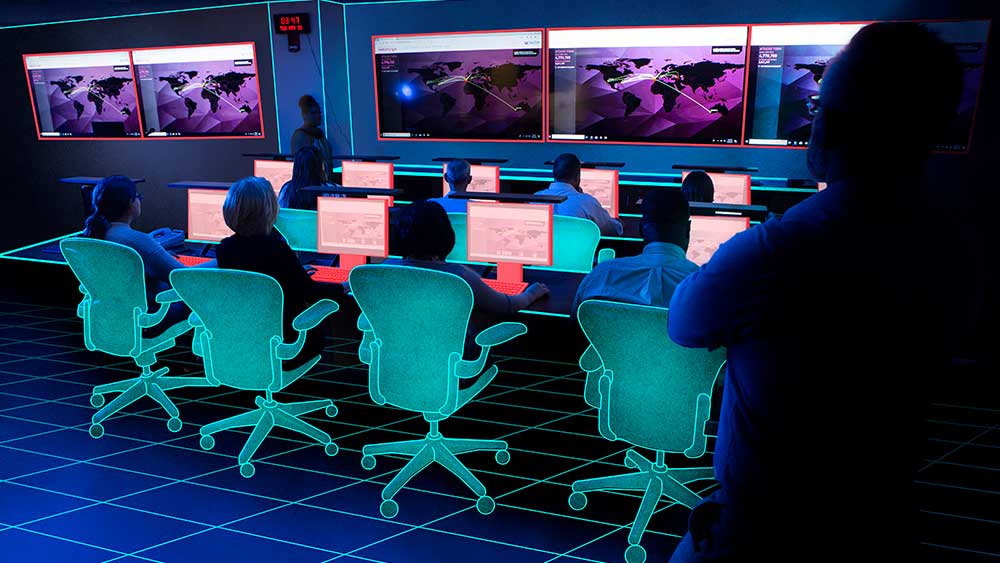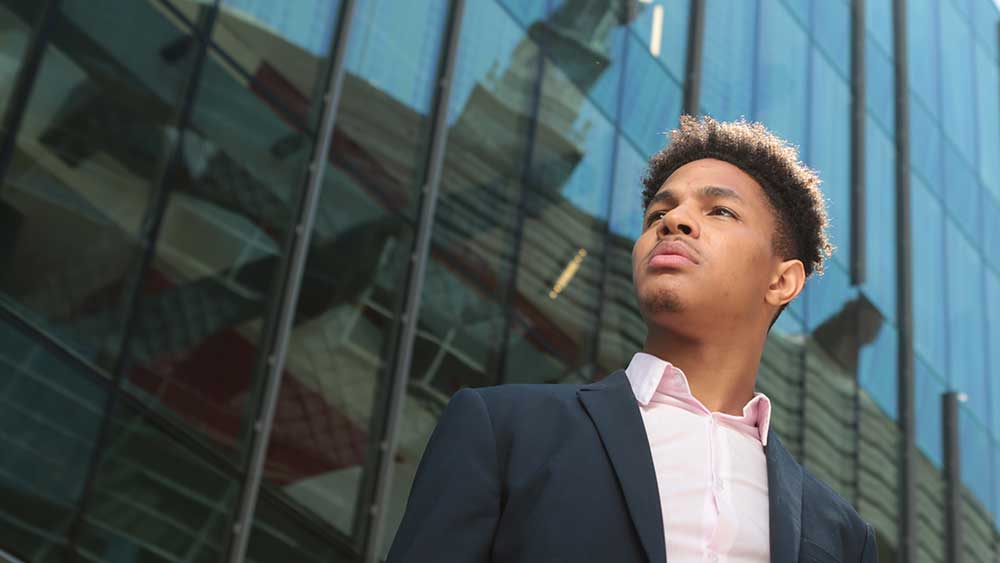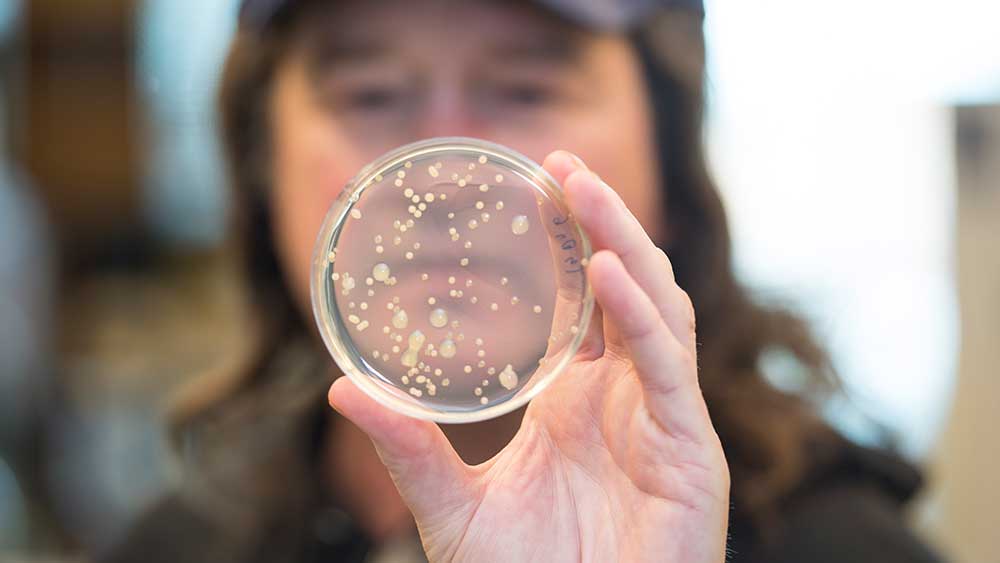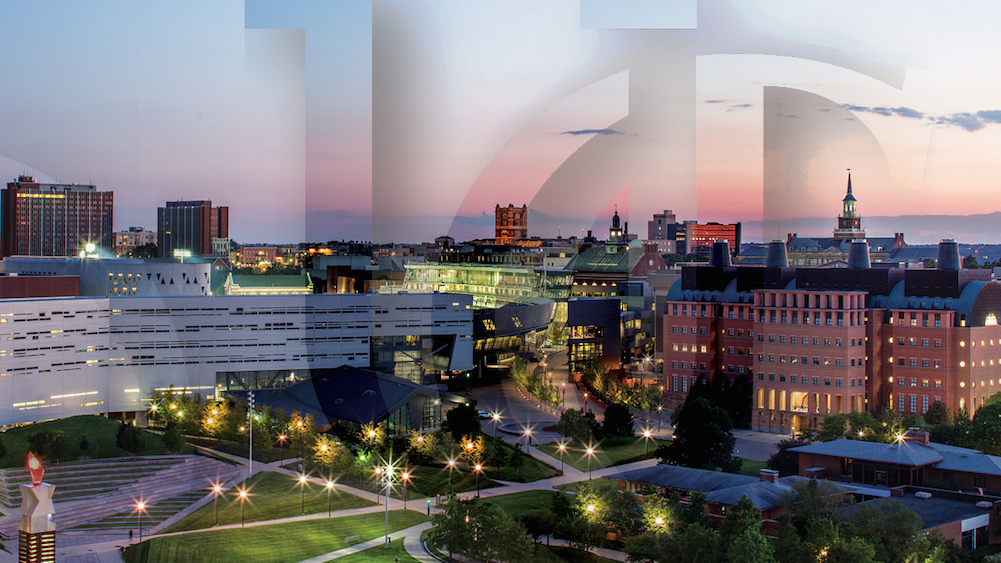Down the Drive
Just as the band uses Down the Drive to travel into the heart of campus, UC Magazine's Down the Drive section takes you to the heart of what's happening at UC.
Accomplished student Laura Mendez Ortiz strives toward humanizing immigration issues
Laura Mendez Ortiz was four years old in 2000 when her family fled Colombia for the United States. Their move was part of a wave of immigrants leaving a country ravaged by decades of drug cartels, economic recession and political instability.
For her parents, however, the reasons for leaving were far more personal. Owners of a modest car repair shop in Bogotá, her family began to receive frightening phone calls and threats if demands for cash weren’t met.
“If you owned a business, you were an easy target,” says Ortiz. “They had specific information about where we lived and where my sister went to school. We moved for our safety.”
Ortiz’s father sold what he could and was able to secure a visa to come to Cincinnati, where another family member lived. Soon, she followed with her mother and sister. While her parents sought asylum, they were told they didn’t have enough proof of the threats that forced them to leave their home. When their visa expired, they were faced with staying in the U.S. illegally or risking the return to Colombia.
“My parents decided to stay in the United States and worked hard to provide my sister and me a better future,” says Ortiz, who graduated from UC as a Distinguished University Honors Scholar in April 2018 with a degree in international studies and a degree in international affairs. A first-generation college graduate, she was one of only five honored in the spring as a Presidential Leadership Medal of Excellence winner by President Neville Pinto, an award established to recognize scholarship, leadership, character and service.
Ortiz attended UC on a full scholarship as a Darwin T. Turner Scholar and graduated from the University Honors program. Her time at UC became largely about sharing her story and advocating for others, particularly those like herself, with DACA (Deferred Action for Childhood Arrivals) status, a temporary protection created by President Barack Obama in 2012. For her, the goal became “to humanize the narrative” around DACA students, of which there are around 800,000 nationwide.
On campus, she became president of Latinos en Acción and helped the university develop web content to simplify the application process for future undocumented students. Off campus, she began advocating for Spanish-speaking families at area schools and began coordinating an after-school tutoring program for kids.
Her third year at UC, however, she began to withdraw from the spotlight and stopped sharing her story as an undocumented immigrant as she saw the political rhetoric against DACA students escalating with the approaching 2016 election.
“My biggest fear was that if I lost DACA, I’d lose my scholarship,” she shares. “Luckily I had a really great support system at UC.”
Once elected, President Donald Trump delivered on campaign promises and announced in September 2017 that he would end the DACA program. That move, however, was later rescinded in federal court, and the future of DACA remains unclear.
Instead of staying in the shadows, Ortiz ramped things up in fall 2017 and stepped back into the conversation on a national level when she and 150 other undocumented students from around the country lobbied lawmakers in Washington to make DACA protections permanent.
“By speaking out, I reclaimed my voice, but by taking a step back, I was kind of being a coward,” she says. “I feel like I’m supposed to be advocating, and if I’m not, I’m being selfish.”
Ortiz is now pursuing her master’s degree in community planning at UC’s College of Design, Architecture, Art, and Planning, which, she says will further prepare her to tackle immigration issues head on.
— J. Bach
Nearly 500 volunteers at 50 community sites mark fifth year of UC Serves
Buzz saws, scraping shovels and children’s laughter.
All were heard loud and clear across the Tristate as nearly 500 University of Cincinnati faculty and staff devoted a day in May to pour their energies into serving more than 50 community venues and nonprofits.
During the fifth annual UC Serves day of community engagement, UC volunteers planted trees, played with local schoolchildren, cleaned debris, painted walls and much more.
“UC Serves has been a fantastic way for staff and faculty to lead by example and act as role models for our students in service to others,” says Fran Larkin, program coordinator for UC’s
Center for Community Engagement, which co-hosted the event in partnership with Emerging Leaders in Student Affairs. “This event gives staff and faculty the opportunity to expand our campus networks, meet new people and deepen our connection to our colleagues and the community.”
These ongoing volunteer efforts have had a long-lasting impact throughout Greater Cincinnati. Several local elementary schools plan field days around the annual UC Serves event, as it provides a day of fun and learning. In prior years, for example, UC servers who worked with second-graders making volcano models helped ignite an enthusiasm for science. Since then, the teachers remark how many of their students look forward to becoming UC students when they grow up.
Each year volunteers say UC Serves increases their feelings of connectedness, not only to the community, but also to each other as they work side-by-side with colleagues they would otherwise never have a chance to know.
“When we work together in service we build stronger professional skills, and we all benefit,” adds Larkin.
— M. Schefft
Medical startup uses UC know-how to detect brain bleeds
Technology created and commercialized by doctors in the University of Cincinnati’s College of Medicine is one step closer to taking the guesswork out of brain bleed detection. CT scanners remain science’s most rapid and efficient tool for determining when there are changes happening in a patient’s brain, despite the technology being more than 40 years old. But the machines are expensive and immobile, which means that hospitals have to be strategic about who gets scanned and when. People who have suffered traumatic brain injuries and intracerebral hemorrhages can’t just sit in a CT scanner while their recovery is monitored.
Instead, they’re observed in the intensive care unit. Patients who are awake and responsive are tested every few hours to detect changes in behavior and movement, while changes in comatose and unresponsive patients are unlikely to be detected until their next CT scan. Bleeding in a patient’s brain can take hours to detect, and, by that time, the damage is already done.
Sense Diagnostics (SD), a medical technology company with strong ties to the University of Cincinnati Academic Health Center, recently completed its first human clinical trial of a headset that uses radio frequencies to detect brain bleeds.
“We’re very excited about this technology and think its usefulness will extend beyond what we’ve already seen,” says Dr. Matthew Flaherty, a neurologist in the UC College of Medicine. “In addition to our hemorrhage program, we are actively planning studies to evaluate other applications for stroke and brain injuries.”
SD CEO Dan Kincaid says he is encouraged by recent test results.
“There were no significant device-related events and, more importantly, we were able to see bleeds as small as a few milliliters,” says Kincaid. “We were able to accurately detect expansions in bleeding and accurately assess when a bleed was not expanding. We had 100 percent agreement with CT scans, which is really what you’re looking for.”
The company, co-founded with UC doctors Opeolu Adeoye, Joseph Clark and George “Chip” Shaw, with help from the UC Technology Accelerator, is preparing for a pivotal FDA clinical trial this fall. If all goes well, Sense Diagnostics could bring the product to market by mid-2020, says Kincaid.
“UC’s got an excellent research program,” he adds. “In addition to the technology and our physicians being from [UC], it’s a great place to work with. We’ve been happy with our relationship with UC all the way through.”
— M. Koesters
Construction management student saves contractor millions with system developed on co-op
Brianna Karelin has loved bridges for as long as she can remember. Her childhood family vacations often included detours to check out the local spans, and she never really grew out of it. She interned with the Ohio Department of Transportation and the Delaware County (Ohio) Engineer’s Office while she was in high school. And when she visited job sites, she knew she was looking into her own future.
Karelin, CEAS ’18, worked on bridges of all sizes during her first three co-op experiences as she pursued her construction management degree from the University of Cincinnati — from small, single-span overpasses in Pennsylvania to the billion-dollar Ohio River Bridges Project in Louisville, Kentucky.
One of her co-ops was for Helix Electric, an electrical design firm with offices throughout California, which installs electrical systems in new constructions. The company had been wooing her since her freshman year. Karelin appreciates the irony that her career detoured away from bridges within spitting distance of the Golden Gate Bridge.
“We can teach you electrical, but we can’t teach you interpersonal skills,” she recalls being told. “We can’t teach you work ethic. You need to come work for us.” Reluctantly, she accepted a co-op with Helix, despite her relationship with electricity — or lack thereof. “Electricity? Yeah, I charge my phone every night,” she says. “That’s about the extent of it.”
She got off to a rough, humbling start learning about her new world of voltage, rough-ins (the running of wiring and such) and Ohm’s law, sometimes feeling like a first-year student all over again. But when she was challenged by her boss to put everything needed for a rough-in into one prefabricated box and come up with a logistics plan for on-site staging, Karelin found her stride.
She improved several of Helix’s procedures by designing an elegant colorcoded system that automatically populates purchase order forms and greatly increases the amount of work that can be prefabricated before it arrives at the worksite. By plugging in the needs of a given job site, her system can efficiently and without error generate everything needed for a given box. Karelin likens it to creating a system to design shoes. “I want the logo this color. I want it to have a non-slip sole. I want it to be leather, as opposed to canvas. I want it to have these shoestrings,” she explains. “I did that with electrical boxes.”
Her improvements are being rolled out to Helix worksites around the country, saving the company millions.
“Forms and paperwork that used to take weeks — if not months — to complete can now be formalized in a couple of days to a week,” says Eric Serna, a senior project manager with Helix. “The ability for someone to come into the electrical industry with no prior knowledge and, within eight months, completely change how we have been functioning for the past seven years is beyond impressive.”
Helix wasn’t about to let Karelin get away. They kept her on after her second semester of co-op as a remote employee, and as she neared graduation last spring, they ramped up the courtship. They let her write part of her own job description (the draft she received from them was labeled “the Brianna hybrid position”) and now she’s the liaison between job sites and prefabrication shops, constantly searching for ways to improve their processes.
Karelin came to UC because of co-op, and co-op allowed her to see different parts of the country while she tackled new challenges. But now that college is behind her and her professional career is getting started, she’s glad to finally put down some roots. “I’ve moved every four months for three or four years,” she says. “I want to hang some stuff on the walls now.”
— M. Koesters
UC researchers use drones to help improve traffic and public safety
Engineers at the University of Cincinnati are taking to the sky to improve traffic safety in one of the busiest driving states in America.
Gridlock is both a nuisance and a safety issue in Ohio, where drivers can log more than 10 billion miles per month. UC’s College of Engineering and Applied Science assembled a team of experts in computer science and electrical, mechanical and aerospace engineering to help the state study traffic and conduct inspections.
The university is equipping the Ohio Department of Transportation with a fleet of drones that can record and transmit live images to officials across the state. The drones carry a box called Mobile Milestone that sends video to UC computers to count and sort traffic into 14 categories from motorcycles to the heaviest big rigs.
UC is providing certified pilots, acquiring permits and building a digital platform to analyze the data in the state project, according to associate professor Manish Kumar.
UC built on its existing relationship with the state for this project. UC professor Arthur Helmicki, another principal investigator, previously flew drones to record and analyze the implosion of the Jeremiah Morrow Bridge off I-71 north of Cincinnati.
“You have computer engineers working with mechanical engineers working with aerospace engineers working with transportation engineers,” Helmicki said.
In Helmicki’s computer science lab, UC students are working on an augmented-reality system that stitches together photos from drones into a three-dimensional rendering. Unlike virtual reality, which puts the user in a virtual three-dimensional space, augmented reality creates a virtual world in an actual three-dimensional space, like a conference room. Officials will be able to see traffic and infrastructure challenges.
The state recently granted UC a two-year extension to expand the project. The university will help the state implement drones in inspections of bridges and other infrastructure. Kelly Cohen, director of UC’s Department of Aerospace Engineering, says the partnership demonstrates how UC can harness its collective resources to tackle big problems.
“There’s a Hebrew phrase: With the food comes the appetite,” says Cohen, who is from Israel. “We showed them what we could do and now they want more.”
— M. Miller
FEATURES
Researcher takes innovative approach to detect lead in drinking water using carbon nanotubes.
The School of Information Technology at UC is leading the charge in Ohio to strengthen the state’s cybersecurity capabilities and talent pipeline.
Journalism student Alberto Jones shares his Boldly Bearcat story about surviving abuse to chase his dream of becoming the next Oprah.
UC’s unconventional scientist tackles remedy for cystic fibrosis and COPD with solution that could have worldwide impact.
UC prepares to celebrate its Bicentennial in 2019 — honoring the past, elevating the present and bending the future.
President Neville Pinto: Seeking the 'new and next' as UC turns 200

